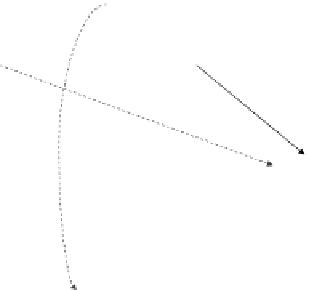Agriculture Reference
In-Depth Information
Kiawamagira
7. Inadequate AI
services
17. Poor access road
6. Private vets
26. Off-farm
employment
24. Low dairy
productivity
25. Rental
houses
30. Forest
control
27. Small-scale
enterprises
8. No extension
services
31. Deforestation
21. Selling land
to “outsiders”
29. Firewood
shortage
20. High
population
33. No telephones
2. Income
9. Low fodder
production
23. Land
subdivision
28. Inadequate
security
32. Electricity
committee
19. No crop
rotation
22. Non-participation
in village activities
18. Small land
sizes
10. Soil erosion and
land degradation
12. Kale production
5. Water shortage
11. Low crop
productivity
1. Human health
13. Run-off
3. Distance
to schools
4. Pollution of
Kabuthi Stream
14. Predisposition
to swamping
15. Public works
(roads)
16. Railway
37. Inadequate and expensive
Health services
34. University
campus
35. Dagoretti market and
slaughter houses
36. Manure
fIGuRe 4.5
A cognitive map depicting perceptions of factors influencing health and sus-
tainability in Kiawamagira intensive survey site, Kiambu Village, Kenya, 1997. See CD for
color image. AI, artificial insemination.
4.3.4 m
A h i in D i
The cognitive map depicting perceptions of the Mahindi community is shown in
Figure 4.6. With a total degree of 12, vertex 4 has cognitive centrality. Other ver-
tices with high total degrees are 33, 19, and 26, with total degrees of 7, 6, and 6,
respectively. There are 12 sources (1, 3, 13, 15, 16, 17, 22, 23, 27, 32, 35, and 36)
and 3 sinks (5, 30, and 37). Of the six key community goals, employment, water
availability, and nursery schools show no impact on other vertices in the digraph
(Table 4.7).
Water quality, health care, and roads have ambivalent impacts on vertices 7 and 8
owing to the perceived negative impacts of the arc [6, 7] and path imbalance between
vertices 4 and 8. Inverting or removing arc [6, 8] increases the positive impacts
of community goals to 40. Similar results are obtained with removal of arc [8, 7].
Removing arcs [9, 4], [18, 33], and [4, 18] reduces the positive impacts of community
goals to 21, 26, and 26, respectively. Inverting arcs [9, 4], [18, 33], [4, 18], and [32, 19]
reduces the positive impacts to 21, 22, 22, and 26, respectively, while increasing
negative impacts to 17, 16, 16, and 4.
Assuming unit weight and time lags on each arc, the digraph is unstable under all
simple autonomous pulse processes, with 1.25 the highest eigenvalue. The impacts
of community goals based on these processes are shown in Table 4.8. Employ-
ment, water availability, and nursery schools have no impacts other than on their






























































Search WWH ::

Custom Search